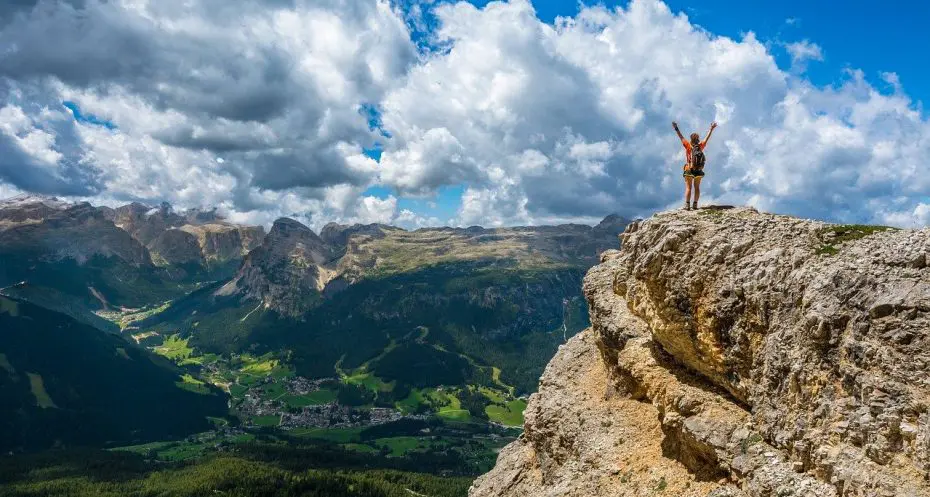The Dolomites, a mountain range in northern Italy, are renowned for their stunning landscapes, characterized by jagged peaks and lush valleys. As part of the Southern Limestone Alps, this UNESCO World Heritage site offers some of the most breathtaking scenery in Europe, making it a premier destination for hikers and outdoor enthusiasts.
Importance of Hiking Trails
Hiking in the Dolomites provides an unparalleled opportunity to experience nature at its finest. The trails offer a range of difficulty levels, ensuring that both beginners and experienced hikers can find routes suited to their abilities. Exploring these trails allows for physical activity, a chance to witness diverse flora and fauna, and a chance to immerse oneself in the region’s rich cultural heritage.
Best Hiking Trails in the Dolomites
Tre Cime di Lavaredo
One of the most iconic hikes in the Dolomites, the Tre Cime di Lavaredo loop offers stunning views of the three distinctive peaks that give the trail its name. This moderate hike provides panoramic vistas and is accessible for most hikers. The loop can be completed in a few hours, making it popular for day trips.
Seceda and the Alpe di Siusi
Seceda, with its strikingly green pastures and dramatic mountain views, is a gem of the Dolomites. The area is home to numerous trails that cater to different skill levels. The Alpe di Siusi, Europe’s most extensive high-altitude plateau, offers gentle hikes with spectacular views of the surrounding peaks.

Lago di Braies and the Surrounding Trails
Often referred to as the “Pearl of the Dolomites,” Lago di Braies is famous for its crystal-clear waters and scenic surroundings. The easy, picturesque trail around the lake is perfect for leisure, while more challenging routes branch off into the surrounding mountains.
Val di Fassa and the Catinaccio Range
Val di Fassa is a popular base for exploring the Catinaccio (Rosengarten) range. The area features a variety of trails, from leisurely walks to more demanding hikes. The Catinaccio, known for its distinctive red rocks, provides particularly captivating sunset views.

The Sella Group and Passo Pordoi
The Sella Group offers some of the Dolomites’ most rugged terrain, with trails challenging even seasoned hikers. Passo Pordoi, known as the “Terrace of the Dolomites,” provides a panoramic view of the surrounding peaks and is a great starting point for various hiking routes.
Best Times to Hike and Weather Considerations
Seasonal Variations
The Dolomites are a year-round destination, but the best time to hike depends on your desired experience. Summer offers warmer temperatures and accessible trails, while winter transforms the area into a snow-covered wonderland perfect for skiing and snowshoeing.
Weather Tips for Hikers
Weather in the Dolomites can be unpredictable, so checking forecasts before setting out is essential. Always be prepared for sudden changes in weather and carry appropriate gear, including layers, rain protection, and sun protection.
Essential Gear and Safety Tips
Must-Have Gear
Essential gear for hiking in the Dolomites includes sturdy hiking boots, a daypack, water, snacks, a map, and a first-aid kit. Additional items like trekking poles, crampons, or a GPS device may be necessary depending on the season and trail.
Safety Precautions
Safety is paramount when hiking in the Dolomites. Always inform someone of your plans, stay on marked trails, and be aware of your surroundings. In case of emergencies, know the location of the nearest rescue services.
Local Wildlife and Flora
Common Wildlife
The Dolomites are home to diverse wildlife, including marmots, chamois, and golden eagles. Wildlife sightings can enhance the hiking experience, but it’s essential to observe animals from a distance and avoid disturbing their habitat.
Notable Flora
The region’s flora includes alpine flowers such as edelweiss, gentian, and alpine roses. These plants add vibrant colour to the landscape and are a highlight for many hikers.
Accommodation and Dining
Nearby Lodging Options
The Dolomites offer a range of accommodation options, from luxury hotels to cosy mountain huts. Popular towns like Ortisei, Canazei, and Cortina d’Ampezzo provide convenient access to hiking trails and amenities.
Local Restaurants and Cafés
Sampling local cuisine is a must when visiting the Dolomites. Traditional dishes include speck, canederli (dumplings), and strudel. Many regional restaurants and cafés offer hearty meals and a chance to experience local flavours.
Cultural and Historical Insights
Historical Significance of the Dolomites
The Dolomites have a rich history, with influences from various cultures over the centuries. The region played a significant role during World War I, and historical sites and museums offer insights into this period.
Cultural Heritage and Traditions
Local festivals, crafts, and traditions reflect the Dolomites’ cultural heritage. Engaging with local customs can enhance the hiking experience and provide a deeper understanding of the region.
Future Outlook and Emerging Trends
Developing Trails and Hiking Projects
The Dolomites continuously evolve, with new trails and hiking projects being developed. Staying informed about these changes can help hikers explore new areas and enjoy updated facilities.
Innovations in Hiking Gear and Technology
Advancements in hiking gear and technology, such as GPS devices and weather apps, enhance the hiking experience. Keeping up with these innovations can improve safety and convenience on the trails.
Conclusion
Summary of Key Points
The Dolomites offer diverse hiking experiences, from easy walks to challenging climbs. This region is a must-visit for outdoor enthusiasts with stunning landscapes, rich cultural heritage, and various trails.
Final Thoughts and Recommendations
Whether you’re a seasoned hiker or a casual walker, the Dolomites provide unforgettable adventures. Plan your trip according to your skill level and interests, and prepare adequately for a safe and enjoyable experience.




